1st COST Conference and Management Committee Meeting: Poultry Red Mite: a continuing threat to the poultry industry
Researchers from 20 countries met to discuss Dermanyssus gallinae in May 2015
The 1st COST Conference and Management Committee Meeting on ‘Improving current understanding and research for sustainable COntrol of the poultry REd MIte Dermanyssus gallinae (CO.RE.MI) - COST ACTION FA1404 - was held in Foggia (Italy) 28-29th May 2015.
The two-day conference was organised by the University of Foggia’s Department of Agricultural, Food and Environmental Science (SAFE) Parasitology Chair, Professor Annunziata Giangaspero.
The Plenary session in the Santa Chiara Auditorium on Thursday 28th May had 150 participants, mostly researchers (32%), vets and agronomists (16%), poultry industry technicians (10%) and post-graduate students (35%), all interested in the poultry mite. The Management Committee Meeting on Friday 29th at the Department SAFE was attended by the representatives from the Countries involved in this European Union Project.
What is COST ACTION – COREMI?
The European COST ACTION-COREMI Project – chaired by Professor Olivier Sparagano from the Coventry University (UK) - aims to apply a synergistic/holistic approach to improving the health, welfare and productivity of millions of laying hens via more effective prevention and control of Dermanyssus gallinae, the Poultry Red Mite (PRM).
This objective will be achieved by cooperation and multidisciplinary networking between scientists and other stakeholders from the different member states and beyond and from different disciplines, thus making the European poultry industry more competitive with other leading countries.
COREMI plans to consolidate existing expertise and knowledge to improve understanding of PRM and its economic and social impacts, and to use this information to implement more efficient and sustainable control methods.
Who attended the COST Meeting and why?
Top researchers from many European and non-European countries (UK, Belgium, Croatia, Czech Republic, Denmark, Finland, Romania, Serbia, France, Germany, Portugal, Italy, Norway, Poland, Spain, Sweden, Switzerland, Netherlands, Israel and Canada) met to discuss one of the most important issues for the poultry industry: poultry ectoparasite Dermanyssus gallinae, known to poultry farmers as the "red mite". The parasite has damaging effects on animal health, including direct pathogenic effects (it feeds on blood) and also its role as a vector of viruses and bacteria. The poultry red mite also concerns human medicine, as it sometimes attacks poultry farm workers and there have been recurring cases of human infestations originating from pigeons’ nests in urban contexts.
The meeting provided the opportunity for a constructive discussion, and above all for sharing the important results of scientific research aimed at developing more effective monitoring models and better systems for controlling the parasite in the poultry industry.
Topics discussed, interdisciplarity and their strict interconnections
The Plenary schedule was very informative. After Professor Sparagano’s introduction and presentation of Cost Action (aims, structure, activities), the 4 main themes of the conference – developed in working groups led by Professor Olivier Sparagano (UK), Monique Mul (NL), Lise Roy (FR) and Antonio Camarda (IT), were presented by 14 speakers.
The main themes highlighted during the conference are as follows:
Developing alternative control measures
Controlling PRM populations in commercial premises is essential to maintain bird health and production efficiency. Spraying poultry facilities with synthetic pesticides is currently the most commonly used PRM control method. However, the legislated withdrawal of previously effective pesticides due to toxicity and environmental concerns has depleted the repertoire of effective controls available to poultry farmers. The problem is exacerbated by PRM’s development of resistance to the remaining pesticides. Alternative control methods and strategies prolonging the effective use of existing pesticides are urgently required.
Kathryn Bartley (Moredun Research Institute, UK) talked about the development of promising new vaccine-based control strategies, with the first prototype vaccines progressing to pre-clinical field trials. However, PRM research is still in its infancy. Pedro Hernández-Crespo (CIB-CSIC, Sp) and Tuomo Tuovinen (Natural Resources Institute, Fi) advocated using knowledge of tick and crop pest species and launching a common research agenda to accelerate research into PRM. Furthermore, they recommended using an integrated pest management (IPM) approach to consider how to merge current pesticide and silica treatments with new PRM control measures (vaccines, new pesticides, predatory mites, entomopathogenic fungi and essential oils), to ensure that new PRM control solutions meet farmers’ needs (i.e. appropriate and cost-efficient RPM control and high productivity) and also reduce public health and environmental risks by minimizing pesticide use.
End users (One Health)-interdisciplinary approach
"One Health is the combined effort of multiple disciplines to improve health of humans, animals and plants within sustainable ecosystems by using an integrated systems approach to come to transnational solutions".
Wim van der Poel (Central Veterinary Institute, NL) emphasized that interdisciplinary collaboration and systems approach is needed to tackle the poultry red mite problem since animal, human, and environmental factors are involved in the problem. Cristian Magdas (University of Cluj-Napoca, RO) reported that in in Romania, 25% of the laying hens are kept in private backyard flocks and have a PRM prevalence of 80-95%. Inadequate treatment protocols have resulted in develpment of pesticide resistance in backyard flocks. In addition, uncontrolled usage of illegal products and the potential for contamination of eggs and meat is now a major concern for public health. David George (Northumbria University, UK) stressed the increasing number of PRM attacks on humans, and the need to collaborate with dermatologists to avoid underestimation and misdiagnosis of dermanyssossis. It is suspected that Lyme Disease, Bartonella and Babesia are transmitted by poultry mites and there is an urgent need for further exploration of the extent of the threat to human health. An important key to research and control of PRM is based on correct monitoring. Jutta Berk (Friedrich Loeffer Institute, DE) presented research which concluded that modified mite traps (a plastic tube lined with corrugated paper) are useful to determine mite infestation in laying sheds and for the successful mite control.
Genetic structure in a changing world
Greatly improved DNA-based biotechnologies are outstanding tools for better understanding of the behavior of PRM and associated organisms in poultry farms, in particular in the current context of global changes. Considering the genetic structure as a source of DNA markers, this theme is methodology-related and links to all PRM discussion themes, allowing better knowledge of PRM epidemiology, improvements in preventive and control measures, and identification of possible new control methods (e.g. vaccine development, resistance management), also in view of the One Health concept. The importance of the knowledge of the genetic structure for epidemiological study of PRM was explained effectively by Øivind Øines (Veterinary Institute of Oslo, NO), whose research demonstrated that the D. gallinae population infesting laying hens in Norway does not seem associated to the wild red mite population and is thus somewhat restricted.
The need for genetic studies in other fields was also described by Danijela Horvatek (University of Zagreb, HR), who summarized the studies on PRM’s vectorial role, and by Jan Chirico (National Veterinary Institute, S), who illustrated the new avenues of molecular tools (barcoding /metabarcoding) for monitoring and control of several species of arthropods.
The real application of such new tools at the ecosystem level within farms were presented by Monica Young (University of Guelph, CND), who described why and how the DNA barcoding methods work. For example, efficient and fast characterization of soil/litter dwelling communities would enable the identification of mite and microorganism assemblages with a suppressant effect on PRM populations,
the possible competitors (e.g. Ornithonyssus sylviarum), and the statement of epidemiological patterns of mite-transmitted bacterial or viral diseases.
Epidemiology, pathology, geographical mapping and surveillance tools
Knowledge of PRM morphology, biology, lifecycle, population dynamics and behaviour are all further important keystone information for better overall understanding of D. gallinae and its diffusion in poultry farms. Acquisition of this information is strictly integrated with the other mentioned themes and useful for a unified strategy in mapping or surveillance of PRM even over a wider area.
The talk by Antonella Di Palma (University of Foggia, IT) on the evolutionary development of PRM towards parasitism contributed to understanding of the mite’s morphological strategy (even genetically based) for attacking its hosts. Lionel Zenner (VetAgro Sup Lyon, FR), who reviewed PRM’s lifecycle, biology and population dynamics, emphasized how the knowledge acquired can be applied - via a modeling process – in the field and allow prediction of such events as the effects of PRM on a sanitary clearance, on acaricide treatment, and consequently on PRM control.
This 1st COST Action FA1404 Conference gave information of some research on PRM within the European context and beyond, and provided an opportunity to make contact with other researchers willing to collaborate and become Members of COST Action FA1404; this is very important, since the COST group needs to open up new lifelines in order to continue addressing its objectives and needs from the poultry industry.
The Conference also underlined that COST Actions deeply support early stage researchers through Short Term Scientific Missions (STSM); these aim to strengthen the existing networks and to foster collaboration between COST Countries, in addition to Training School and Workshops.
The 1st Conference was made possible by the support of local institutions (Order of Veterinary Surgeons, Banca del Monte Foundation) and Companies (APPI, Olmix, Bayer, Elanco, Zoochimica and Levanchimica) interested in supporting research on sustainable control of this poultry pest.
If anyone would like to participate in the COREMI COST Action, or any further information, please contact a member of the organizing committee listed below.
Further Information
Files
- Programme 1st COST Conference on COREMI (1.4 MB)
- Proceedings 1st COST Conference on COREMI (1.8 MB)
- Minutes of the 1st Cost Conference and Management Committee Meeting (English) (518.4 KB)
Links
- coremi.eu: COREMI Website
- cost.eu: COST Action FA1404
 This website was archived on January 18, 2020 and is no longer updated.
This website was archived on January 18, 2020 and is no longer updated.

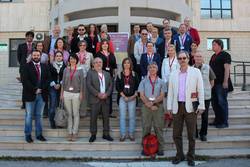
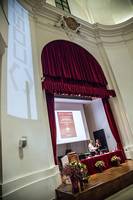

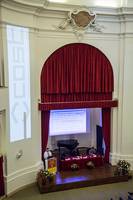

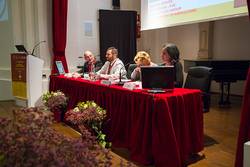
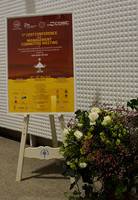
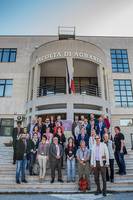
 COST is supported by the EU Framework Programme Horizon 2020
COST is supported by the EU Framework Programme Horizon 2020